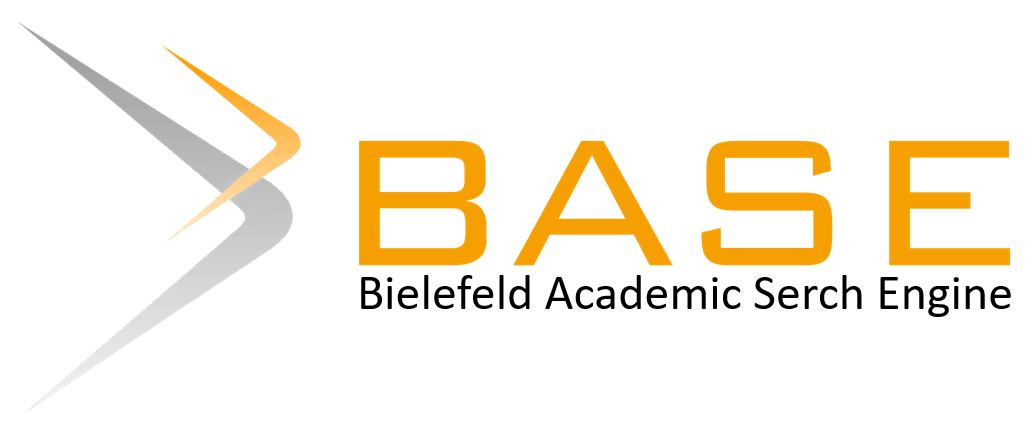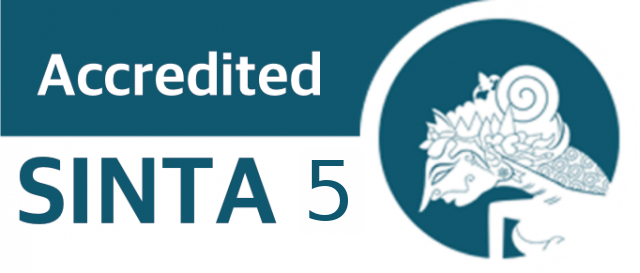Giant Condyloma Accuminata in Pregnancy, Use of Trichloroacetic Acid combined with electrocauterization and excision Procedure: A Case Report
DOI:
https://doi.org/10.30595/hmj.v4i3.10252Keywords:
Condyloma acuminata, pregnant women, TCA, excision, electrocauteryAbstract
Condyloma acuminata is a sexually transmitted disease caused by the Human Papilloma Virus (HPV). During pregnancy, condyloma acuminata can proliferate rapidly due to changes in immunity and increased blood supply. One of the safest therapeutic modalities is trichloroacetic acid (TCA). Electrocautery is another modality in pregnant patients. A 16-year-old woman, 6-months pregnant, complained of a wart-like lump in the pubic area getting more prominent since the last two weeks and covering the vagina surface. The lump is not itchy and painless. From history-taking it was found that patient often changes partners. On physical examination, the lesions were multiple papules with a verrucous surface. The results of the work-up showed a positive acetowhite test. Patients are then treated with a TCA of 80-90% during pregnancy and followed by electrocautery and excision during cesarean section. The results of 80-90% TCA treatment followed by electrocautery and excision were satisfactory, and there were no recurrences when the patient went for a follow-up. TCA is a substance that is caustic and can erode skin and mucous membranes. TCA works by coagulation of proteins which causes dryness of cells and tissues. TCA is safe for pregnant women. Combination of TCA 80-90% with electrocautery and excision, in this case, proved to be effective with no sign of recurrence. The combination of TCA therapy with electrocautery and excision has proven effective and safe for pregnant patients.
References
- Eassa BI, Bakr AA. Intradermal injection of PPD as a novel approach of immunotherapy in anogenital warts in pregnant women. Dermatologic Therapy, 2011; 24: 137–43.
- Daili SF, Indriatmi W, Zubier F, Nilasari H.. Infeksi Menular Seksual, Pedoman Praktis Diagnosis dan Tatalaksana. Kementrian Kesehatan RI. 2015; 29-30.
- Schwartz DB, Greenberg MD, Daoud Y, Reid R. Genital condylomas in pregnancy: use of trichloroacetic acid and laser therapy. Am J Obstet Gynecol, 1988; 158: 1407-16.
- Rozmus-Warcholińska W, Loch T, Czuba B, Mazurek U, Mucha J. Genital warts associated with HPV infection during II and III trimester of pregnancy-a case report and analysis of treatment options., 2007; 78(11): 888-91.
- Centers for Disease Control and Prevention. Sexually transmitted diseases treatment guidelines. MMWR 2010; 59(No.RR-12): 70-3.
- Nath D, Kumar B, Sharma KV, Kaur I, Gupta R, Malhotra S. Comparison of podophyllin and trichloroacetic acid for the treatment of genital warts. IJDVL, 1990; 56(1): 22-4.
- Yenny S. W., Kondiloma Akuminata pada Wanita Hamil: Salah Satu Modalitas Terapi. Jurnal Kesehatan Andalas. 2013; 2(1)
- Centers for Disease Control and Prevention. Sexually transmitted diseases treatment guidelines. MMWR 2006; 55(No.RR-11): 62-6.
- Matsunaga J, Bergman A, Bhatta NN. Genital condylomata acuminata in pregnancy: effectiveness, safety and pregnancy outcome following cryotherapy. British Journal of Obstetrics and Ciynaecology, 1987; 94: 168-72
- Lacey CJN, Woodhall SC, Wikstrom A, Ross J. IUSTI: 2010 European Guideline for the Management of Anogenital Warts in Adults, 2010: 1-18.
- Scheinfeld N, Lehman DS. An evidence-based review of medical and surgical treatments of genital warts. Dermatology Online Journal 2006; 12 (3): 5.
- Akhavizadegan H. Electrocautery Resection, Shaving with a Scalpel, and Podophyllin: a Combination Therapy for Giant Condyloma Acuminatum., World J Mens Health., 2015: 39-41
Downloads
Additional Files
Published
Issue
Section
License
For submission of manuscripts to the Herb-Medicine Journal, the authors must certify that:
I have been authorized by my co-author to submit the manuscript to the Herb-Medicine Journal
I hereby declare, on behalf of myself and my co-authors, that:
The submitted manuscript is original work and has not been published in another peer-reviewed journal or is being considered for publication by another journal. Also, the manuscript does not infringe any existing copyright or other third party rights.
The manuscript does not contain material that may violate the law, slander, or SARA, in any way, violates the terms and conditions contained in the agreement
I/we have taken care that the scientific knowledge and all other statements contained in the manuscript are in accordance with authentic facts and formulas and will not, if followed appropriately, harm the user
No liability shall be assumed by Herb-Medicine Journal, its staff or members of the editorial board for any injury and/or damage to persons or property as a matter of product liability, negligence or otherwise, or from the use or operation of any method, product instructions, advertising , or ideas contained in publications by the Herb-Medicine Journal
Authors who publish in the Herb-Medicine Journal certify that all authors have read and agree to the contents of the Cover Letter or the Terms and Conditions. Plagiarism is strictly prohibited, and by submitting a manuscript for publication, the author agrees that the publisher has the legal right to take appropriate action against the author, if plagiarism or false information is found. Once submitted to the Herb-Medicine Journal, authors will not withdraw their manuscript at any stage prior to publication.
The author owns the copyright and grants the journal rights for first publication with the work simultaneously licensed under a Creative Commons Attribution License which allows others to share the work with acknowledgment of the work's authorship and initial publication in this journal.
Authors may enter into separate additional contractual agreements for the non-exclusive distribution of the published journal version of the work (for example, posting it to an institutional repository or publishing it in a book), with acknowledgment of its initial publication in this journal.
Authors are permitted and encouraged to post their work online (for example, in institutional repositories or on their websites) prior to and during the submission process, as this can lead to productive exchanges, as well as earlier and larger citation of published work (See The Effects of Open Access).
Untuk pengiriman naskah ke Herb-Medicine Journal, penulis harus menyatakan bahwa:
- Saya telah diberikan otorisasi oleh rekan penulis saya untuk memasukkan naskah ke Herb-Medicine Journal
- Saya dengan ini menyatakan, atas nama saya dan rekan penulis saya, bahwa:
- Naskah yang dikirimkan adalah karya asli dan belum pernah diterbitkan dalam jurnal peer-review lain atau sedang dipertimbangkan untuk diterbitkan oleh jurnal lain. Serta, naskah tidak melanggar hak cipta yang ada atau hak pihak ketiga lainnya.
- Naskah tidak mengandung materi yang mungkin melanggar hukum, memfitnah, atau SARA, dengan cara apa pun, melanggar syarat dan ketentuan yang tercantum dalam perjanjian
- Saya / kami telah berhati-hati bahwa pengetahuan ilmiah dan semua pernyataan lain yang terkandung dalam naskah sesuai dengan fakta dan formula otentik dan tidak akan, jika diikuti dengan tepat, merugikan pengguna
- Tidak ada tanggung jawab yang ditanggung oleh Herb-Medicine Journal, stafnya atau anggota dewan editorial untuk setiap cedera dan/atau kerusakan pada orang atau properti sebagai masalah pertanggungjawaban produk, kelalaian atau sebaliknya, atau dari penggunaan atau pengoperasian metode, produk apa pun instruksi, iklan, atau ide yang terkandung dalam publikasi oleh Herb-Medicine Journal
Penulis yang menerbitkan dalam Herb-Medicine Journal menyatakan bahwa semua penulis telah membaca dan menyetujui isi Surat Pengantar atau Syarat dan Ketentuan. Plagiarisme dilarang keras, dan dengan menyerahkan naskah untuk publikasi, penulis setuju bahwa penerbit memiliki hak hukum untuk mengambil tindakan yang pantas terhadap penulis, jika ditemukan plagiarisme atau informasi palsu. Setelah diserahkan ke Herb-Medicine Journal, penulis tidak akan menarik naskah mereka pada tahap apa pun sebelum dipublikasikan.
Penulis memiliki hak cipta dan memberikan hak jurnal untuk publikasi pertama dengan karya yang secara simultan dilisensikan di bawah Lisensi Creative Commons Attribution yang memungkinkan orang lain untuk berbagi karya dengan pengakuan kepengarangan karya dan publikasi awal dalam jurnal ini.
Penulis dapat membuat perjanjian kontrak tambahan yang terpisah untuk distribusi non-eksklusif versi jurnal yang diterbitkan dari karya tersebut (misalnya, mempostingnya ke repositori institusional atau menerbitkannya dalam sebuah buku), dengan pengakuan atas publikasi awalnya di jurnal ini.
Penulis diizinkan dan didorong untuk memposting pekerjaan mereka secara online (misalnya, dalam repositori institusional atau di situs web mereka) sebelum dan selama proses pengajuan, karena dapat menyebabkan pertukaran yang produktif, serta kutipan yang lebih awal dan lebih besar dari karya yang diterbitkan (Lihat The Effect of Open Access).













